Dear AllY,
Please reference this article by Jack Doyle: “Rockwell & Race, 1963-1968”
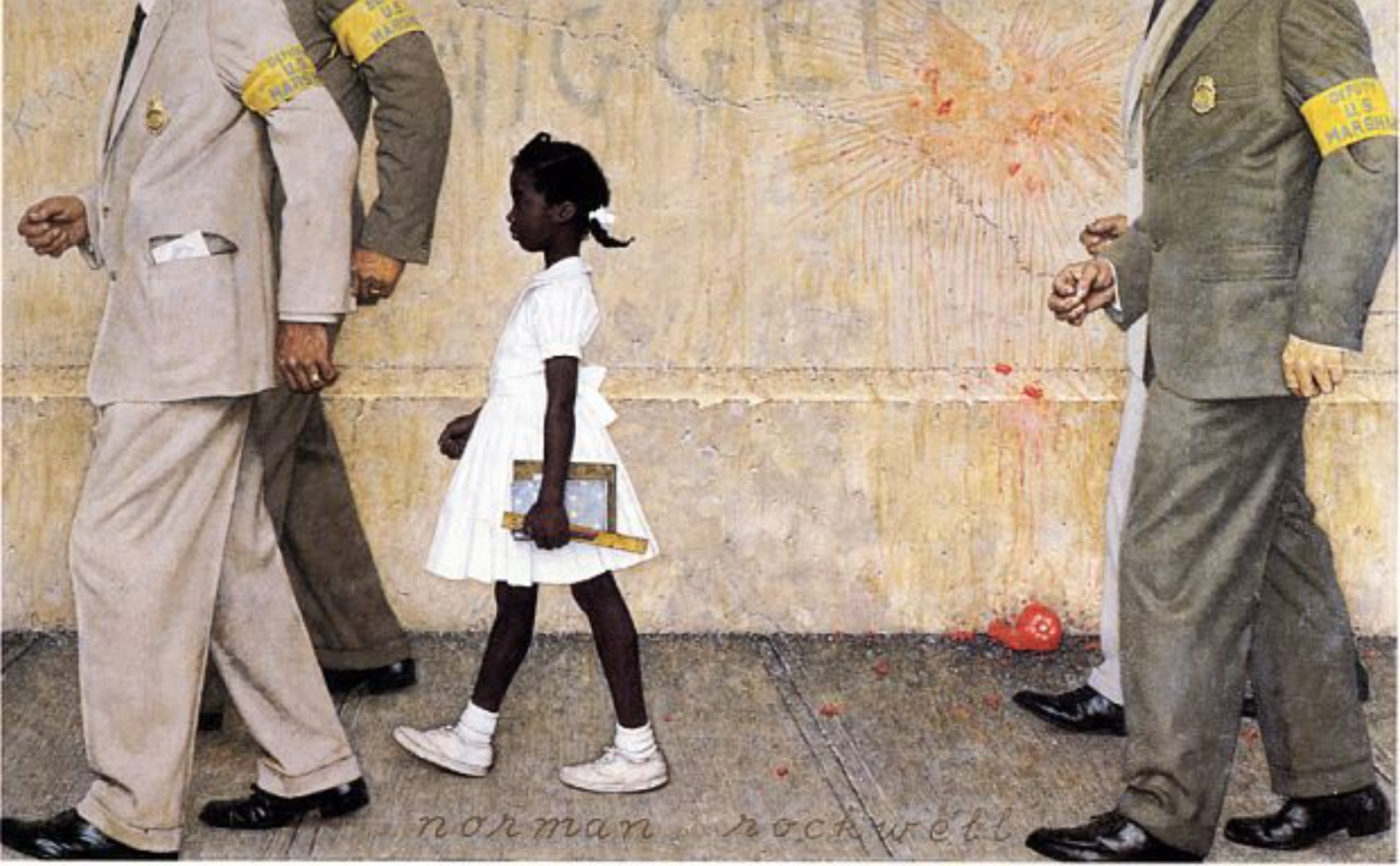
The Problem We All Live With – 1963
By the time the turbulent sixties were to begin, painter Norman Rockwell had already established his place in the collective hearts of Americans. For five decades, Rockwell painted covers for the Saturday Evening Post. While art critics dismissed his artistic skills due to the light hearted content he presented, Rockwell was successful in capturing the imagination of the American people. By the end of 1963 his affiliation with the Saturday Evening Post was no more, and the idyllic scenery of simple Americana which he usually captured, was slipping away in the face of social disruptions and the growing Civil Rights Movement. So in January 1964, sixty years ago, at great personal and professional risk, Rockwell took a chance with a piece of art that would end up challenging some of America’s deep seeded social values.
The iconic piece of art is titled “The Problem We All Live With”. It captures the moment a six-year old Ruby Bridges integrated the New Orleans public school system. It should be stated that Norman Rockwell did take some artistic license in depicting the scene of Ruby Bridges walking into the all-white William Frantz Elementary School, but ended up capturing the quintessential conundrum that American Black and White were grappling with at the time.
The image of a little girl surrounded by four authoritative giants hangs in my living room. It is one of my favorite works of art, as I find it to be at the confluence of two of my favorite things, Art and History. If you squint, there is the N word faintly scrawled on the tomato stained wall. What strikes me most when I study the picture, is what Norman Rockwell noticed. He noticed the power dynamic; the delicacy of a young girl, being protected by the arms of the law. He captured dignity, in understanding the racial justice assignment Ruby Bridges was taking part in her community, but the larger American social context as well. On one hand Norman Rockwell is responsible for the impact that those Saturday Evening Post images of a socially ordered and idyllic America presented. His story could be left at those successes as one could ignore the extent to which the presence of minorities in everyday scenes were largely absent. But the wealth of Norman Rockwell’s story can’t be reduced to his legacy with a paintbrush. Norman Rockwell embodies an example of someone who goes on their own journey of understanding themselves and others. I want to point to Norman Rockwell’s journey as a model of allyship. Rockwell’s evolution is that of a person who is secure in their identity, while being willing to evolve their ideologies. Rockwell also used his very public platform to call attention to the absurdity (my word) of allowing skin color to distract and obstruct Americans from practicing the best of the American values he had been capturing for decades prior.
Here at YWCA Northeast Indiana, we are happy to be intentional about spreading awareness, which is why you will see that our 2024 Racial Justice programming will be focused on the theme of ALLYSHIP. We are working with the understanding that “Allyship” is defined as ““One that is associated with another as a helper; a person or group that provides assistance and support in an ongoing effort, activity, or struggle.” You will see that our Racial Justice blogs, Diversity Dialogues, Race Against Racism, and any additional programming will be used to educate and inform our region as we continue to imagine what developing allies across cultural communities may look like for us in Northeast Indiana.
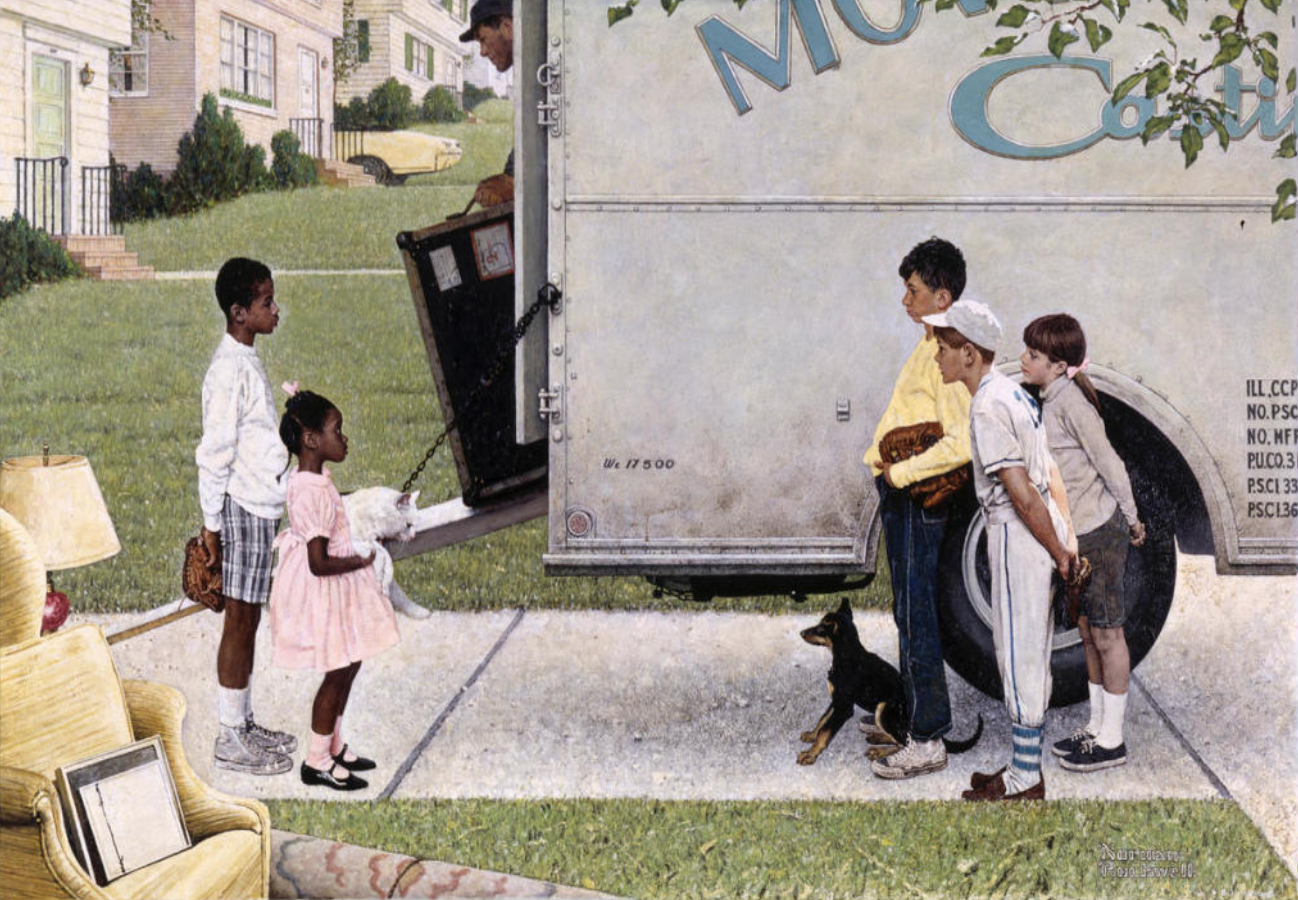
New Kids in the Neighborhood – 1967
Below are three more of my favorites from Norman Rockwell. This article explores them (and more like it)!
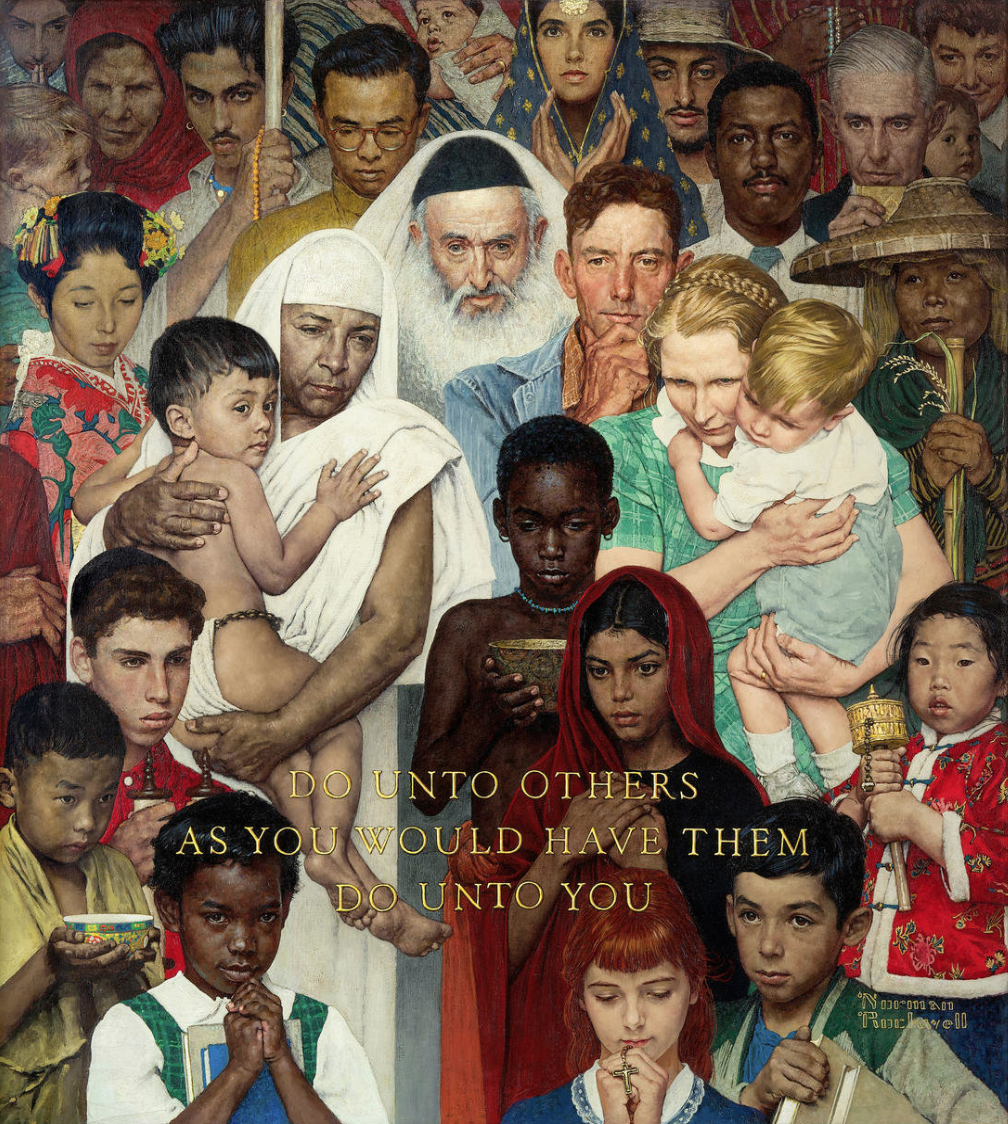
Golden Rule – 1961
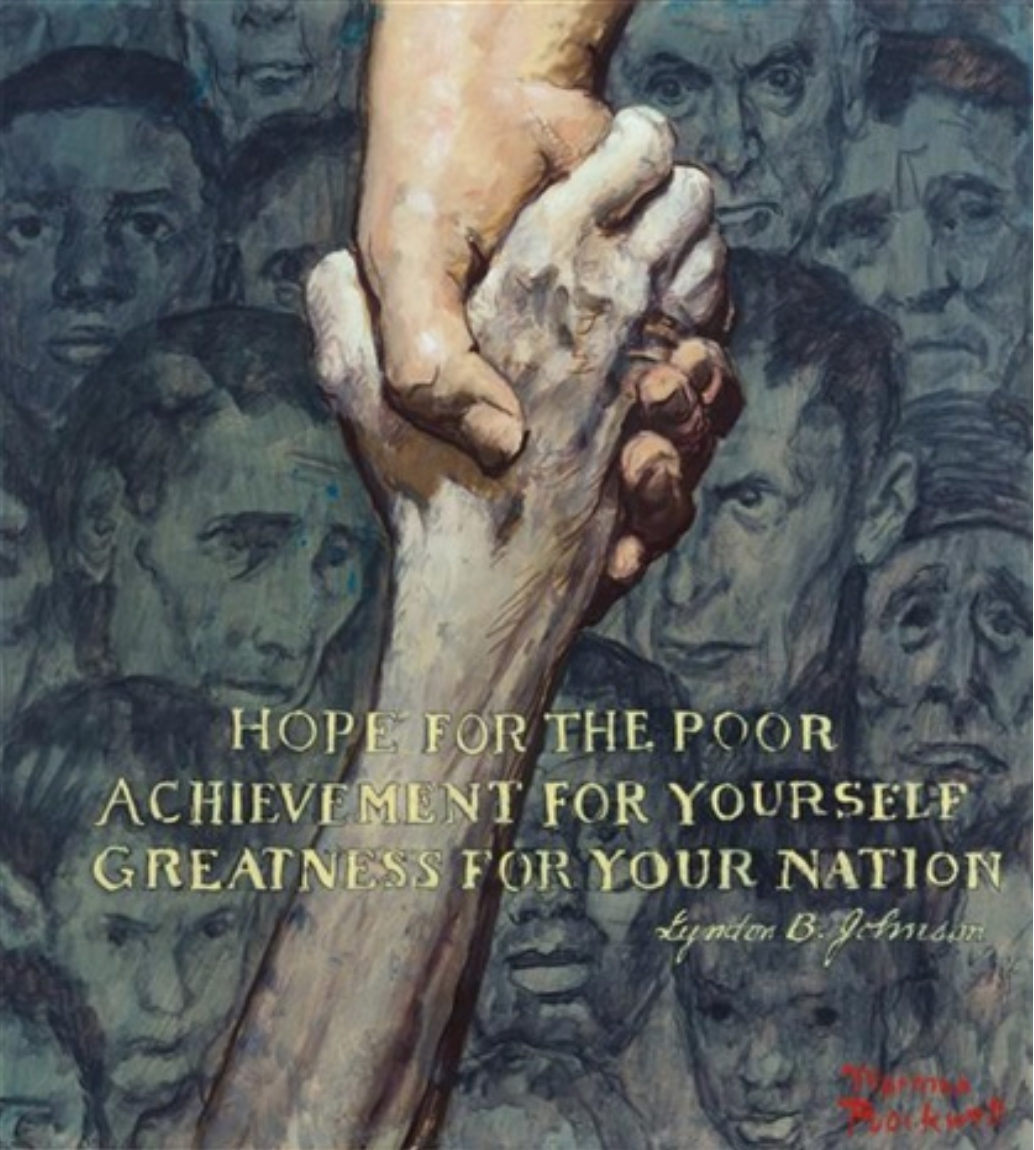
How goes the War on Poverty? – 1965
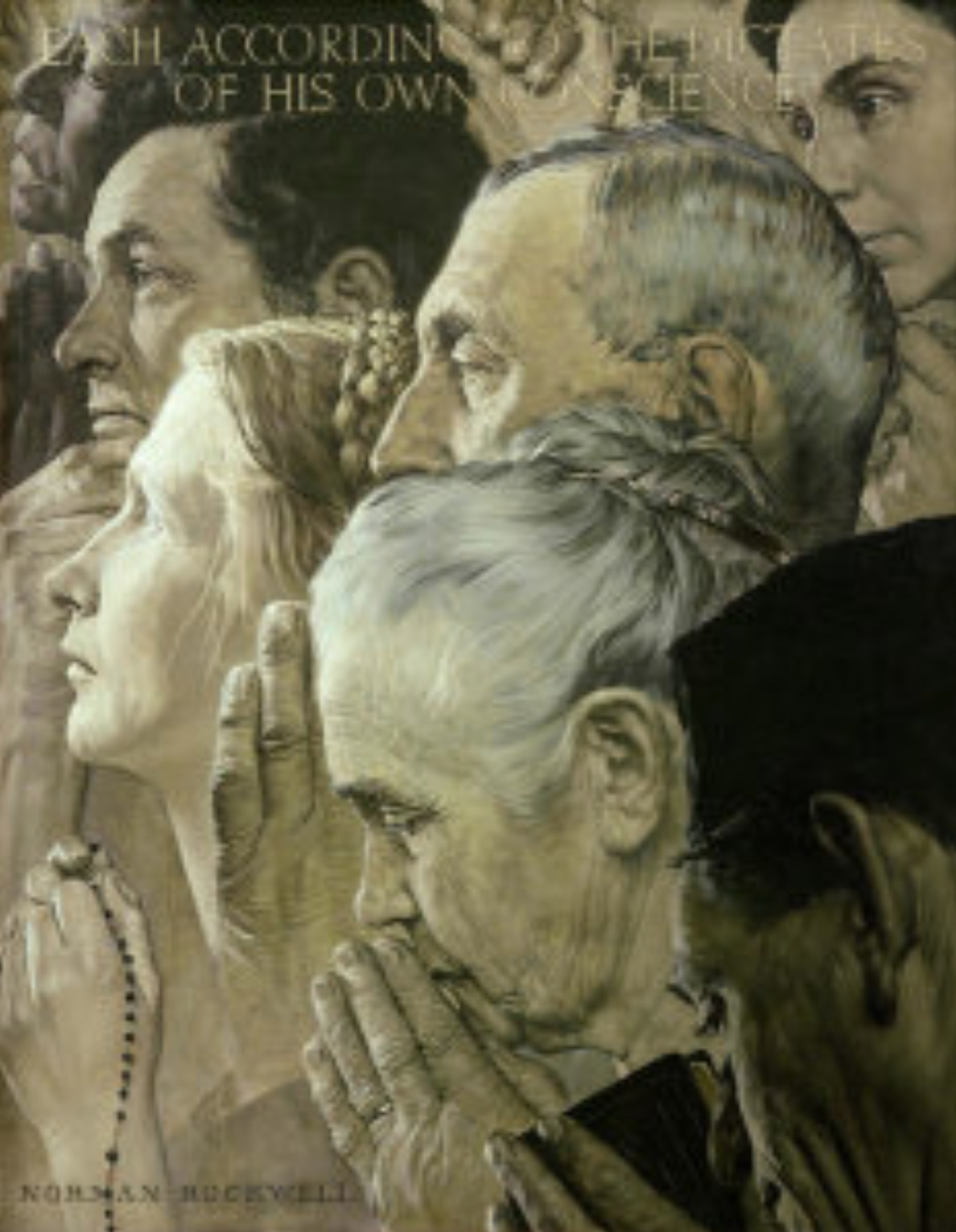
Freedom to Worship – 1943
Heather Guy, Racial Justice Coordinator
Contact Heather: hessex@ywcaerew.org
